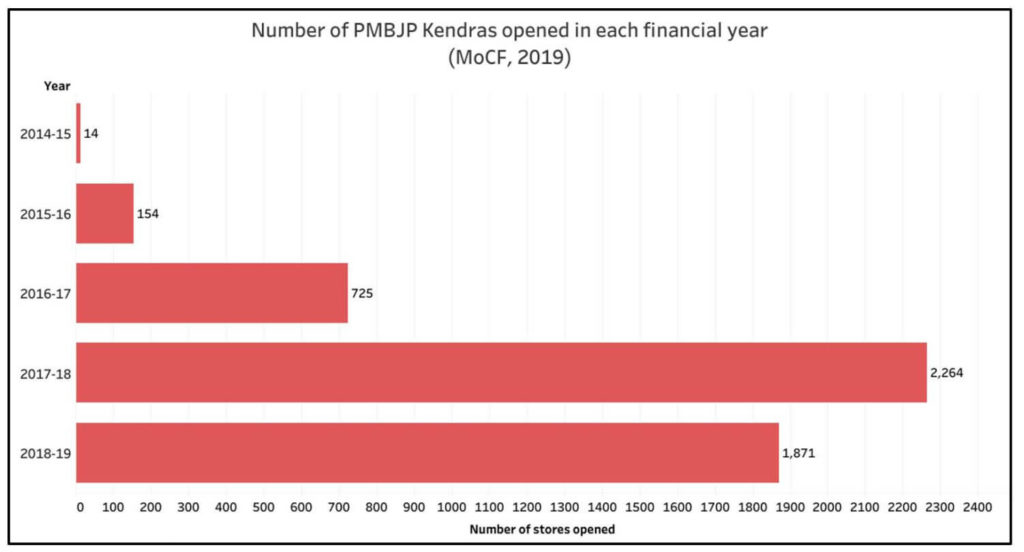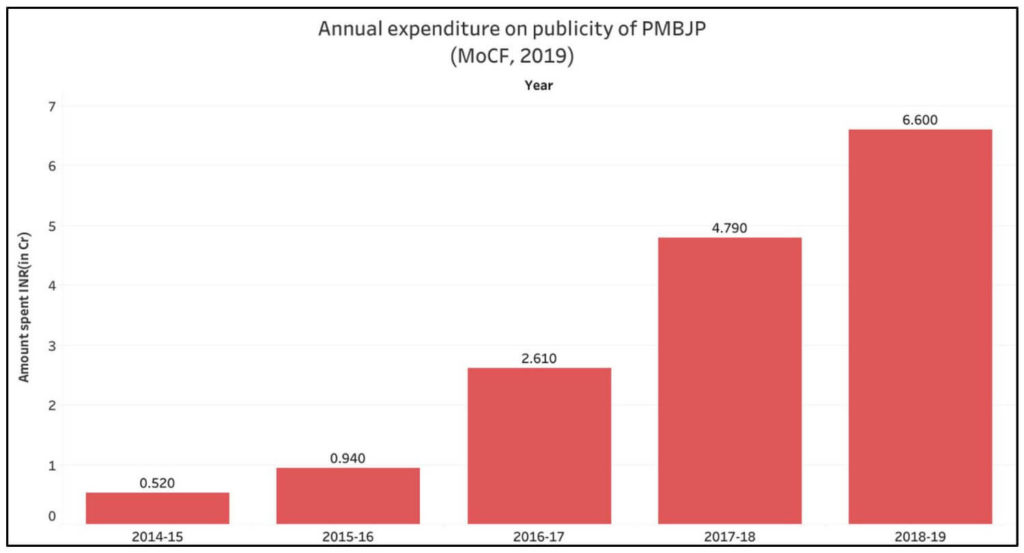[orc]Are Medicine (Drug) prices controlled in India? Is there any government scheme that provides medicines at subsidized cost to all the citizens? Here is a detailed explainer.
Every year in India, the increasing expenses on healthcare impoverish about 75 million families. This was stated by Mansukh L. Mandaviya, the Minister of State (MoS) in the Ministry of Chemicals & Fertilizers while answering a questionin the Lok Sabha. With constant efforts being made across the globe to make healthcare universal and accessible for everyone, many policies are devised by governments and related agencies in order to ensure universal & affordable health care for all. One major step towards achieving this goal is to reduce the out of pocket expenditure on healthcare by the citizens. Increasing the number of Public Health Centres, improvement in the quality of services, introduction of health cards and insurance schemes and providing medicines at subsidised rates are some of the measures taken. In this article, we throw some light on whether medicine (drug) prices are controlled in India and the difference between generic and branded medicines. We also discuss the government scheme being implemented in India for providing generic medicines to citizens, and the statistics related to this.
How are branded and generic medicines different?
Generic medicines are those medicines which are equally effective as the branded ones and are equally safe. What makes them different is that generic medicines are unbranded and are priced much lower than their branded equivalent. This is because generic drug manufacturers need not opt for clinical trials, advertising and marketing of their drugs. Since, there may be more than one company producing the same medicine, competition exists and hence they are forced to sell at a lower price. This is the case in India. Variations in terminology exist in different countries.
According to the National Health Portal of the Government of India, India’s supplies 20% of the global generic medicines by volume. India is also becoming a leader in the generic drugs market worldwide. While this is the case in the global scenario, let’s take a look at what is happening within the country.
How are the prices of generic drugs fixed in India?
In our country, pricing of drugs is monitored and regulated by the National Pharmaceutical Pricing Authority (NPPA), in the Ministry of Chemicals & Fertilizers. NPPA fixes the prices on the basis of Drugs (Price Control) Order of 2013 (DPCO) and the provisions mentioned in DPCO. The ceiling price of ‘scheduled formulations’ whether branded or generic, is fixed by NPPA (excluding tax). Medicines should not be charged above this limit. Drugs are continuously added to the list of scheduled formulations. All such scheduled formulations and their ceiling price can be searched online on the NPPA website.
In the case of non-scheduled formulations (those that are not part of DPCO Schedule-1), there is no such ceiling price applicable. However, not more than 10% increase in Maximum Retail Price per annum is permitted as per DPCO.
Under the PMBJP Scheme, generic medicines are made available at 50-90% cheaper than the original price
The Bureau of Pharma Public Sector Undertakings of India, referred to as BPPI, launched a scheme, Pradhan Mantri Bharatiya Janaushadhi Pariyojana (PMBJP) in order to ‘bring down the healthcare budget of every household by providing quality generic medicines at affordable prices.’ The generic medicines sold under this scheme are usually cheaper by 50% to 90% of the average price of the top three brands of the corresponding medicine. Even though it was initially launched in 2008, the scheme started gaining momentum in 2015 and has been implemented more effectively since then.
5028 Janaushadhi stores are now open across the country
The first Janaushadhi Kendra was opened in 2008 at Amritsar in Punjab. The original mission was to open at least one such kendra in every district of the country. As per the government’s assessment, the scheme really didn’t take off because of a limited portfolio of medicines coupled with chronic stock-outs. A new strategic action plan was prepared and approved in 2015 to achieve the original objectives.
During the first term (2014-19) of the BJP led NDA government, a total of 5028 Janaushadhi stores were opened in 5 years. In the financial year 2014-15, only 14 stores were opened. In the following year, 154 stores were opened of which 108 were opened in Chhattisgarh alone. In the subsequent years of 2016-17, 2017-18 and 2018-19, 725 stores, 2264 stores and 1871 stores were opened respectively.

The maximum number of stores are in Uttar Pradesh (807), followed by Tamil Nadu with 498 stores. Gujarat and Karnataka are next in the list with 475 stores each and Kerala with 450 stores is in the fifth place. Sikkim, Meghalaya, Andaman and Nicobar Islands, Chandigarh, Daman & Diu and Goa have less than 10 stores each. In Lakshadweep, the medicines are directly procured from BPPI and provided to the people free of cost. Collaboration with the Indian Railways in opening stores in railway stations is also being considered by the Ministry.
The list & address of all the functional stores can be accessed online. The list of all the available generic medicines and their price can also be accessed online from the scheme website.
6.6 crore rupees was spent on the publicity of the scheme in the last financial year
Publicity plays a pivotal role for the success of the scheme since people have to be aware of the presence of such stores and the available medicines. Over the last five years, as per the data provided by the Ministry of Chemicals and Fertilizers, the amount spent on the promotion of the scheme has increased manifold. The graph depicts the trend. Starting with ₹ 0.52 crores in 2014-15, an amount of ₹ 6.6 crore rupees has been spent on the publicity in 2018-19.

As per the latest available information, a total of 714 medicines and 53 surgical items are available in these stores as of July 2019. An additional 24 medicines and 90 items will be available soon. A total of 900 medicines and 154 surgical and consumable items are part of the basket under the scheme as per the latest available data.
In January 2019, the government also presented estimates that approximately ₹ 1668 crores has been saved by citizens of the country since the inception of the scheme.
Lack of awareness among general public is still an issue
Latest government data indicates that the total turnover of all the stores in 2018-19 was only ₹ 315.7 crores, which is less than an average of ₹ 10 lakh per store per year. This is because of huge lack of awareness amongst the general public. The lack of measures to monitor whether doctors prescribe such generic medicines is another criticism of the scheme.
Featured Image:Medicine prices controlled in India


